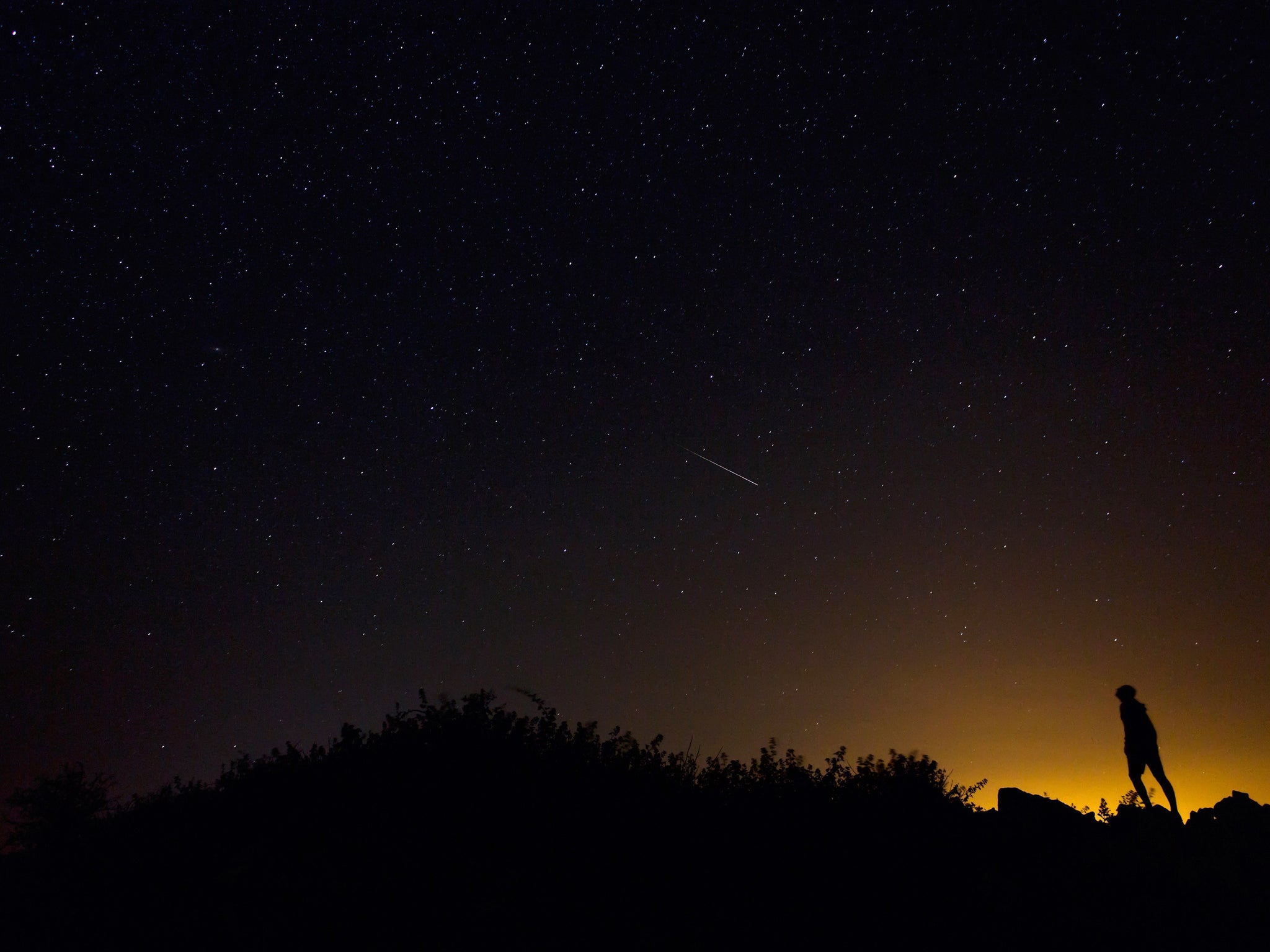Perseid meteor shower will be twice as good as normal this year, says Nasa
The spectacle occurs when we fly through space debris that lights up as it hits the Earth's atmosphere

Your support helps us to tell the story
From reproductive rights to climate change to Big Tech, The Independent is on the ground when the story is developing. Whether it's investigating the financials of Elon Musk's pro-Trump PAC or producing our latest documentary, 'The A Word', which shines a light on the American women fighting for reproductive rights, we know how important it is to parse out the facts from the messaging.
At such a critical moment in US history, we need reporters on the ground. Your donation allows us to keep sending journalists to speak to both sides of the story.
The Independent is trusted by Americans across the entire political spectrum. And unlike many other quality news outlets, we choose not to lock Americans out of our reporting and analysis with paywalls. We believe quality journalism should be available to everyone, paid for by those who can afford it.
Your support makes all the difference.The Perseids, one of the best opportunities in the year for seeing a meteor shower, are approaching. And it’s going to be twice as good this year.
Every August – especially around 11 and 12 of the month – the sky is lit up by a show of shooting stars that fly across the sky. But this year the Earth is going to get an even closer encounter than usual, according to Nasa, and the it will make for a spectacular display.
“Forecasters are predicting a Perseid outburst this year with double normal rates on the night of Aug. 11-12,” said Bill Cooke with NASA’s Meteoroid Environments Office in Huntsville, Alabama, in a statement. “Under perfect conditions, rates could soar to 200 meteors per hour.”
An outburst is a meteor shower that has even more meteors than normal. The last one involving the Perseids happened in 2009.
Each of the meteors spotted in the shower is a tiny piece of Swift-Tuttle, a comet that orbits around the sun every 133 years. As it moves through space, it leaves trillions of little particles in its wake, and when Earth moves through that debris the tiny specks hit the Earth’s atmosphere and go up in a flash.
Most years, Earth just skims past the edge of that debris. But in years like this one, Jupiter’s gravity pulls the dust trail closer to us, and we move straight through the middle and into a field of even more material.
Nasa scientists say that this is going to be one of those years and that we will be moving through at least three steams as the Perseids are visible overhead.
The Presides are best seen on they night of 12 August, and will be especially visible in the very early morning. Nasa recommends that people head outside for 45 minutes so that their eyes can adjust, and then lie back and look up.
As ever, it’s best to move out of the way of clouds and light pollution for a better view. And there will be a livestream of the sight for anyone that isn’t able to see it in person.
“Here’s something to think about. The meteors you’ll see this year are from comet flybys that occurred hundreds if not thousands of years ago,” said Cooke. “And they’ve traveled billions of miles before their kamikaze run into Earth’s atmosphere.”
Join our commenting forum
Join thought-provoking conversations, follow other Independent readers and see their replies
Comments